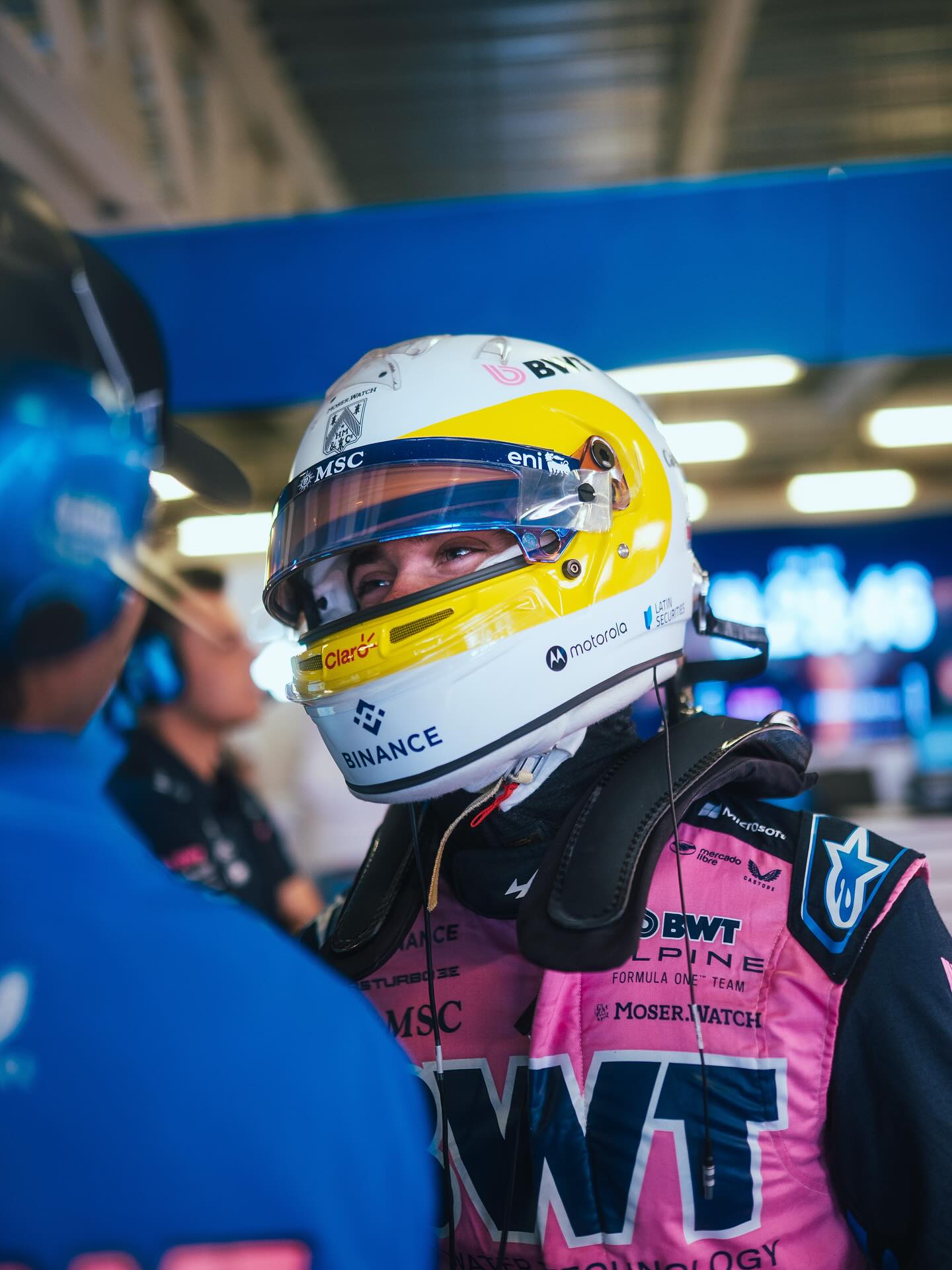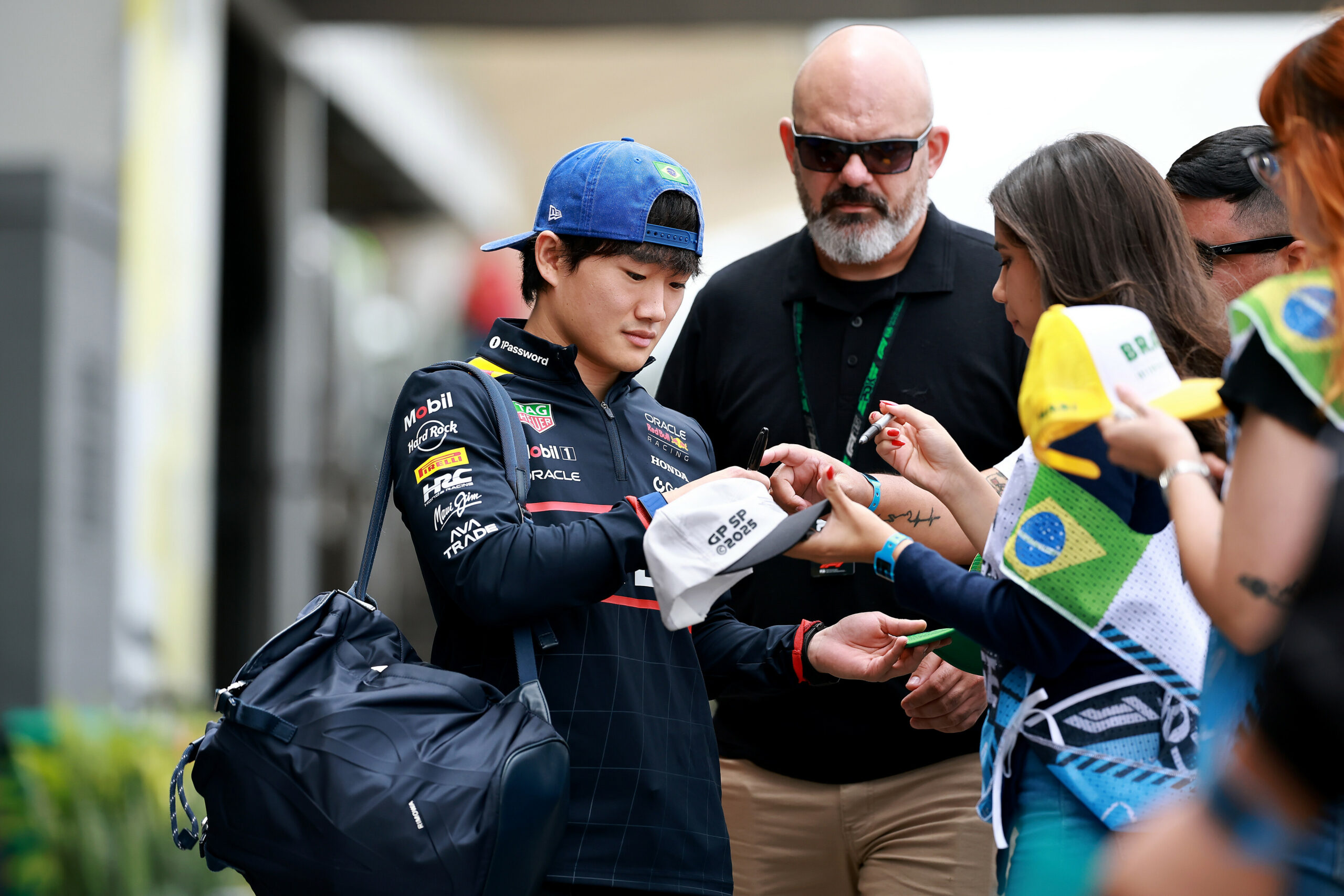A chaotic opening lap at the F1 Mexico City GP left Liam Lawson frustrated and nursing a heavily damaged car after an aggressive move from Carlos Sainz triggered contact at the first chicane. What followed was more than just a racing incident—it sparked a wider reflection from the young driver on how modern Formula 1 track design encourages risky behaviour. With vast run-off zones and forgiving tarmac replacing the gravel and grass of older circuits, Lawson argued ahead of the São Paulo GP that drivers now feel free to overstep limits without consequence, leading to avoidable clashes like his during the F1 Mexico City GP.
Lawson criticises Sainz for reckless chicane cut at the F1 Mexico City GP
Lawson was left with significant damage after a chaotic start at the F1 Mexico City GP. It saw several drivers cut the first chicane, including Verstappen and Leclerc. One of them was also Carlos Sainz. He made an aggressive move across the run-off area and collided with the Kiwi, causing heavy damage to his front wing, floor, and sidepod.
Reflecting on the clash on F1 São Paulo GP media day, Lawson explained that Sainz decided to cut the chicane without checking his mirrors.
“Honestly, I don’t think it’s a Turn 1 specific thing. I think it was an incident where Carlos [Sainz] decided that he would cut the chicane without looking to his left. And he’s just turned sharply left, put 90 degrees of steer onto the left, and I’m sitting right next to him.”
While the opening corner was already tricky due to low grip and a lot of cars around as always on a start, Lawson believes the contact could have been avoided. The incident appeared less about reacting to danger and more about preemptively skipping the corner without enough awareness of other cars. For the Racing Bulls driver, the decision from the Williams driver had a costly consequence.
“He’s hit me so hard he’s broken my wing, my floor and my sidepod, put a hole in it. And I think at that point, I mean Turn 1 is slippery, and you’re always trying to avoid cars. But at that point, after looking into it afterwards, he wasn’t really avoiding anything. I think he just decided to cut the chicane to avoid the chaos that was probably about to happen. But I think at that point you have to be more aware. Because I’m obviously leaving space for the corner, and I’ve just got smashed into it.”
Modern run off invites risky moves while old school circuits punish mistakes
Lawson highlighted how modern circuits gave drivers too many escape options. With large run-off areas, many felt free to cut corners or attempt risky moves without real consequences. He contrasted that with older tracks like Suzuka and Imola, where leaving the track can regularly bring immediate punishment. There, drivers thought twice before lunging into tight gaps or holding a move around the outside. The lack of off-track advantages shaped cleaner, more disciplined racing. At newer venues, that balance no longer existed, and the racing often suffered for it.
“It’s the nature of these types of tracks can be when you have sections like that. There’s loads of run-off in tracks nowadays in Formula 1. You have this kind of thing, you have loads of run-off, and it gives us the option to take it.
“If you look at tracks like Japan and Imola and places like this, you don’t see that kind of thing. Because if you go off the track, you get punished. It’s the same with racing incidents, with overtakes, with track limits, overtaking and gaining an advantage, all this kind of stuff. It’s not going to happen when you have tracks that don’t have advantages off the track. And if they’re not there, we’re not going to take that risk as well. To take a big lunge or to try and stick it out on the outside of somebody.”
Lawson calls out track design and urges a return to grass and gravel
Lawson believed the root of the problem lay in the track design itself. He pointed out that drivers avoided risky moves on circuits where mistakes came with real consequences. But with modern layouts offering endless run-off and tarmac, those risks no longer carried the same weight. Attempts to resolve the issue with bollards and extended white lines hadn’t worked. In his view, only a return to grass and gravel, like the old-school circuits, would stop the growing trend of reckless moves and corner-cutting.
“We’re not going to take that risk if we know we’re going to get punished. And it’s the type of thing that is just happening more and more now. Because these tracks are just so open and have all this run-off and extra tarmac and stuff like this. We’re trying to extend white lines and put bollards and do all this kind of stuff. There just needs to be grass or gravel, like old school tracks, and then there‘s no issues.”





